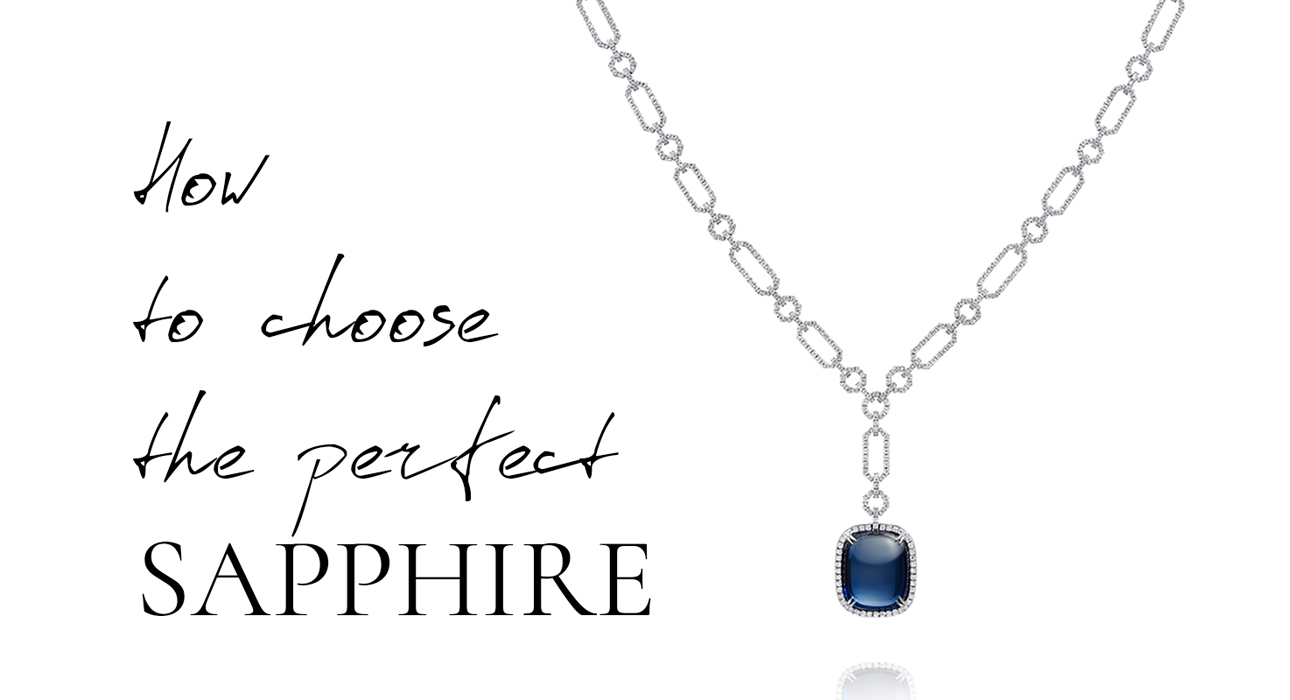
How to choose the perfect sapphire: the essentials

Sapphire is a rare and precious stone.
Belongs to the corundum group. Just like a ruby.
They have the same chemical formula, but differ in the content of impurities.
That is why these absolutely different in color stones can be considered "blood brothers".
In its hardness, it is second only to diamond. That is, only rough diamonds can scratch a sapphire. You have probably often heard the term “sapphire glass” in jewelry and watchmaking. It's not for beauty. It is reliable.

Sapphire pricing depends on many factors.

1️⃣ The first is color.
The richer the shade of blue sapphire, the higher the price per carat.

Blue sapphire is the most valuable and desirable for beauty hunters, but not many people know that the color palette of sapphire is one of the richest among natural gemstones.
(Photo: diamondbuzz.blog)
For example, the stone owes its rich blue color to the presence of titanium and iron compounds, chromium “colors” corundum red, iron and vanadium yellow or green.
Yes, yes! Sapphire is completely colorless. This is a leucosapphire.
It has a lower dispersion than a diamond, it does not “shine” as much, but this stone has excellent hardness.
Studs with colorless sapphires are not uncommon.
Pay attention to the orange-pink color?
This is Padparadscha.
He is so independent that we will talk about him another time. The Padparadscha sapphire definitely deserves special attention.

2️⃣ The second most important factor in the pricing of blue sapphire is its deposit.

- Be prepared to shell out a large amount if you choose a sapphire from Kashmir.
Kashmiri sapphires are no longer mined, and most likely the stone is already changing hands, automatically increasing its value.
We recommend that lovers of a precious investment portfolio take a closer look at them.
- Next — Burma.
Some of the most beautiful blue sapphires were mined there. Their cost per carat often breathes down the back of the Kashmiri representatives of blue corundum.
- If you have Ceylon/Sri Lanka on your certificate, this is also a good sign of a historical sapphire deposit. It is generally accepted that sapphires from Sri Lanka are the largest.
For the purchase of sapphire, we also suggest considering deposits in Madagascar, Australia, Thailand, Cambodia and Tanzania.
☝ We remind you that the sapphire deposit must always be indicated in the certificate!
While in a diamond, the deposit is unimportant, except for personal preference.
Photo: Internet.

The three most famous sapphires known to man were from Sri Lanka.
Queen Of Romania - 478.68 carats
Logan Sapphire - 422.99 carats
The Blue Giant of Orient - 466.23 carats (pictured).
Photo: www.elizabethjewellers.com/

3️⃣ When choosing a sapphire, pay attention to the inclusions inside the stone. After all, this also affects the cost, and is more of a minus than a plus.
While in an emerald or Paraiba tourmaline, inclusions can play a positive role in the appearance of the stone as a whole.
TIP: If you are purchasing a stone with an inclusion for yourself, then choose to have the visible inclusion in the periphery of the stone, and not in the center. So save the beauty of the stone and your budget.
And, important: defects other than cracks do not affect the strength of blue corundum.

4️⃣ And the last thing that is very important to talk about when choosing a sapphire.
Refining.
Yes, sapphires also ennoble.
Well, nature does not create perfect pure blue corundums on order. In such cases, a person with the help of simple ways to bring the stone to the ideal.
Important!
The method of processing the stone must always also be indicated in its certificate. Check carefully, because the difference between the cost of "warmed" and untouched sapphire by a person is enormous!
What is the purpose of ennobling sapphire?
- Getting a blue color.
- Lightening (in reverse) an overly dark color.
- Changes in color characteristics in general.
- Eliminate "undesirable" shades (greenish, yellowish, purple).
- "Growing" ("treatment") of open cracks.
- Improved color and clarity characteristics.
As you can see, they mainly want to fix the color of the stone, which is why the shade in blue sapphire commands the score.
If you have any questions about choosing a particular stone, check out our telegram channel https://t.me/suzanne_code_jewelry we will be happy to help you deal with this difficult but enjoyable task.

